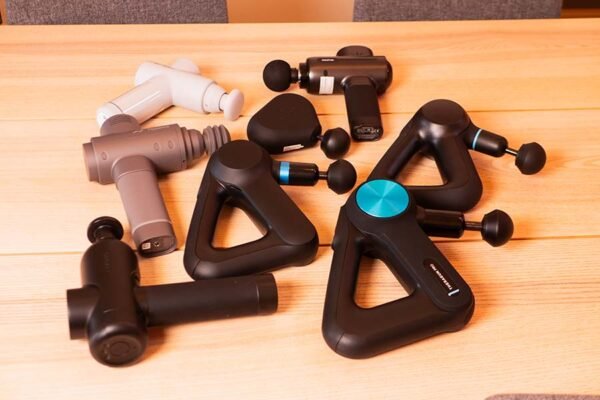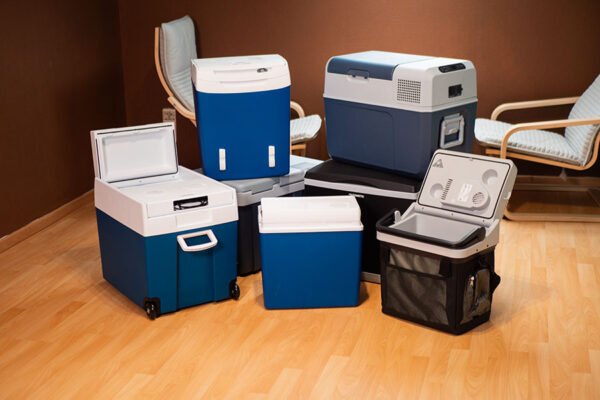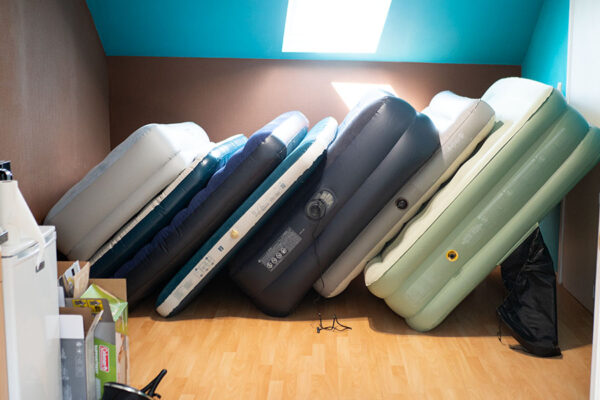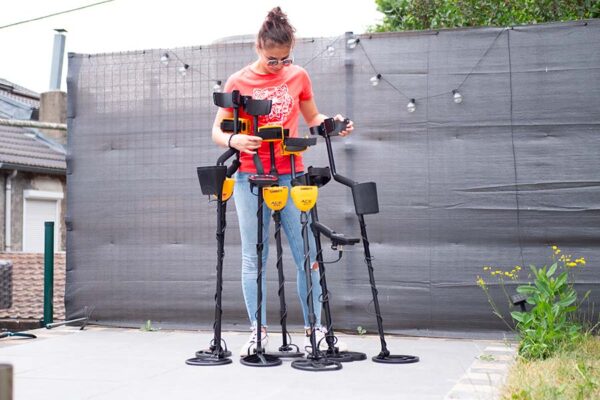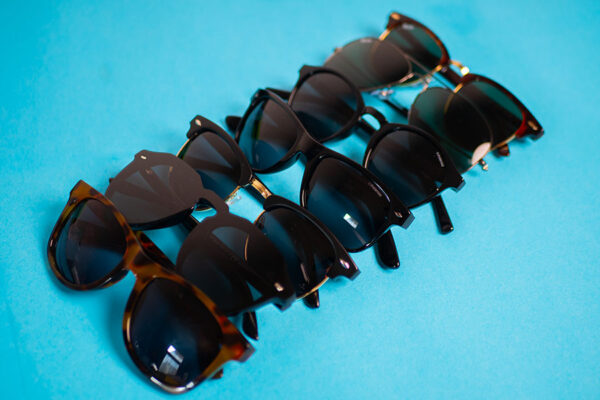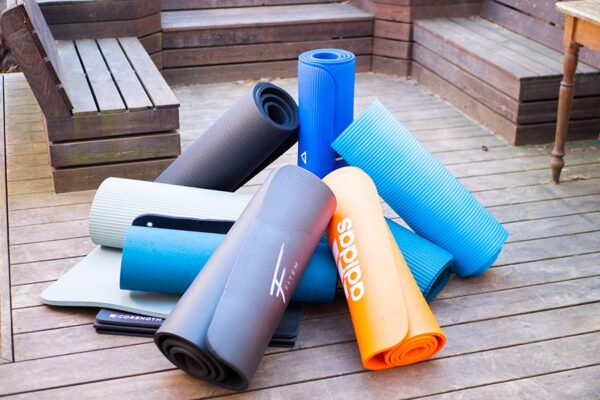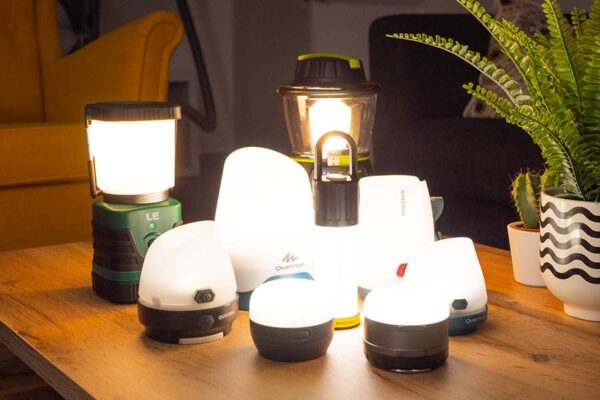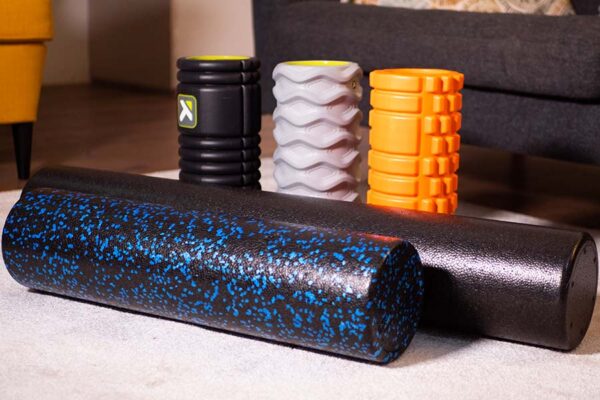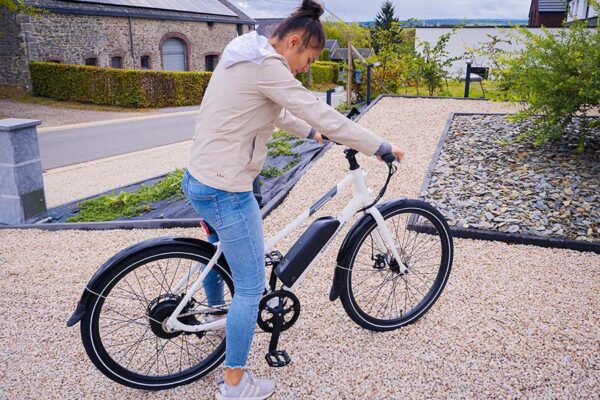Updated on September 5, 2023
Vortex Crossfire HD 10×42
This versatile, handy model benefits from impeccable design and offers high-quality optics, even in low-light environments. What’s more, several accessories are included.

With a weight of around 650 g, these spotting scopes are portable and ensure a good grip. They offer comfortable handling for tracking moving features, and if you want to observe fixed or more precise features, you can attach them to a tripod. The rotating eyecups also allow them to be used with prescription glasses.
The shockproof frame is very strong and durable. Nitrogen purging and O-rings make its design waterproof and offer anti-fog treatment. As a result, fog dissipates very quickly and water droplets do not impair visibility. Multi-coated lenses protect your eyes and limit glare. In our experience, resolution is good, with images that are highly detailed, colors very faithful and contrasts well managed. We enjoyed excellent optics in both light and dark.
Available in several versions (10×50, 12×50 and 40×52), we opted for the 10x magnification and 42 mm lens diameter for this test. Overall, the focusing wheel is smooth and easy to use. We measured a minimum focusing distance of around 2.50 m, and the field of view is sufficiently wide (107 m out of 1000 m) with its 6.2° angle of view. What’s more, the ring on the right eyecup allows diopter adjustment for improved sharpness.
Finally, the brand supplies a chest harness, neck strap, attached lens caps (although they can be a bit awkward), eyepiece caps, carrying case and cleaning cloth.
USCAMEL 10×42
These multi-purpose binoculars are a perfect choice for small budgets. Their practical design, convincing day and night optical quality and accessories make them excellent value for money.

Easy to handle and use, they weigh in at around 850 g and allow you to follow your movements as long as you manage the focus wheel well. The torsion eyecups are ideal for use with or without glasses. For more precise observations, note that they are compatible with a tripod (not supplied).
Their waterproof, anti-glare and anti-fog design guarantees excellent readability in all environments, and for the price, we were pleasantly surprised by their overall quality. Indeed, they feature multi-coated BAK4 roof prisms that deliver bright images with high contrast and excellent sharpness. During our test, we found that they respected colors well and that brightness was sufficient in dark places.
Available in 2 versions (8×42 or 10×42), we opted for the 10x magnification with the 42 mm lens diameter. Focusing is done on close-up elements (minimum 2.50 m), and a diopter adjustment ring is located on the right eyecup for any necessary corrections. The field of view is also quite convincing (105 m at 1000 m).
Accessories include a carrying bag, neck strap, 2 cleaning cloths, eyecup caps and lens caps.
Celestron TrailSeeker 8×42
Versatile, they benefit from a pleasant grip, high-end design, exemplary handling, very close focusing and a hyper-wide field of view to help track moving objects.

This comfortable-to-hold pair is compact and benefits from a reasonable weight of 655 g, which made it easy for us to handle, especially when following faster movements. The rotating eyecups can be adjusted in 3 ways and are perfectly compatible with eyeglasses. What’s more, a tripod adapter is included.
The binoculars feature high-end design quality with a nitrogen-filled magnesium alloy design that makes them waterproof and fogproof. This makes them ideal for outdoor use. During our test, fog disappeared quickly and raindrops didn’t hinder our visibility. The multi-coated BAK-4 roof prisms transmitted a bright, sharp and detailed image, even in low light. Anti-reflective coating protected our eyes, colors were very natural, and black edges barely perceptible.
Available in several versions (8×32, 10×32 and 8×42), we chose to test the 8x magnification for a 42mm lens diameter. This type of configuration offers a less powerful zoom for observing distant elements, but is much more stable than the other models tested. What’s more, the thumbwheel is smooth to operate, and the minimum focusing distance is very close (between 1.50 m and 2 m). The right eyecup features a diopter adjustment ring. This is also the pair with the widest field of view (8.12° angle, 142 m by 1000 m), making it the most interesting for tracking moving elements.
Finally, a carrying case with strap, harness with pouch, neck strap, cleaning cloth and caps for eyepieces and objectives are supplied with the binoculars.
Nikon Prostaff P3 10X42
Ideal for observing wildlife or moving objects, these binoculars are distinguished by their compact, lightweight format, durable, outdoor-proof structure and optical quality.

Weighing less than 500 g, these binoculars are not only lightweight, but also compact. They’re easy to maneuver to keep up with faster movements, and their grip is secure and comfortable. Stability is decent, but if need be, know that they can be mounted on a tripod.
In terms of frame, material quality is excellent, thanks in particular to the rubberized sheathing. Prostaff P3s are tough, waterproof and anti-fogging. In fact, fog quickly dissipated during our tests, and water droplets on the lenses did not impair visibility. The rotating eyecups are even compatible with glasses.
The lenses and roof prisms benefit from a multi-coating that protects your eyes from glare, makes images brighter and ensures greater sharpness. According to our observations, we found good optical quality in both high and low light, with convincing sharpness and faithful colors.
Various versions are available: 8×30, 8×42, 10×30 and 10×42. We opted for the latter configuration, and measured the minimum focusing distance at 2.50 m. The field of view is equally convincing (115 m over 1000 m).
As accessories, Nikon supplies a storage case, neck strap as well as eyecup and lens caps.
Celestron Nature DX ED 12×50
Despite their high price, they are a perfect option for observing distant, stationary subjects, as well as low-light detail. Their ED lenses offer superior optics for viewing nature and the sky.

These 806 g binoculars are easy to handle and pleasant to use, in our opinion. Their coating ensures a good grip, and they feature a close-up and tripod adapter. The rotating eyecups are also designed for spectacle wearers. The material quality of these binoculars is exceptional, so much so that they are waterproof and nitrogen purged, eliminating lens fogging and maintaining good visibility in inclement weather. They’re perfect for use in the harshest outdoor environments.
They feature ED lenses that reduce chromatic aberration and deliver realistic colors under high resolution, while BAK-4 prisms are multi-coated optics that protect your eyes from glare. We found them to be extremely sharp and precise in both high-light and low-light environments. Images are brighter, and the diopter ring on the right eyecup lets you adjust sharpness even further to suit your eyesight.
Several configurations are available: 8×42, 10×42, 10×50 and 12×50. For this test, we chose the latter version. The 12x magnification enables us to see distant elements while remaining stable. We measured the minimum focusing distance at around 2.50 m, allowing us to observe closer elements. What’s more, the thumbwheel is very fluid. Nevertheless, the field of view is narrower (4.8° angle for a linear field of view of 84 m over 1000 m) and given the high magnification, we’d recommend them more for observing static elements than for tracking moving objects.
As for the little extras, the packaging includes a carrying case, neck strap, eyecup and lens caps and cleaning cloth.
Our selection
Our choice, Best mid-range Best value Best high-end Mid-range alternative High-end alternative 




Vortex Crossfire HD 10x42 USCAMEL 10x42 Celestron TrailSeeker 8x42 Nikon Prostaff P3 10X42 Celestron Nature DX ED 12x50 This versatile, handy model benefits from impeccable design and offers high-quality optics, even in low-light environments. What's more, several accessories are included. These multi-purpose binoculars are a perfect choice for small budgets. Their practical design, convincing day and night optical quality and accessories make them excellent value for money. Versatile, they benefit from a pleasant grip, high-end design, exemplary handling, very close focusing and a hyper-wide field of view to help track moving objects. Ideal for observing wildlife or moving objects, these binoculars are distinguished by their compact, lightweight format, durable, outdoor-proof structure and optical quality. Despite their high price, they are a perfect option for observing distant, stationary subjects, as well as low-light detail. Their ED lenses offer superior optics for viewing nature and the sky. £ 199.00 on Amazon £ 48.99 on Amazon £ 207.29 on Amazon £ 135.00 on Amazon £ 232.99 on Amazon
Selectos compares and tests hundreds of products to help you buy better. We sometimes receive a commission when you buy through our links, which helps fund our work. Learn moreWhy trust us ?
How did we test?
For starters, we evaluated their maneuverability (weight, bulk, tripod adapter, grip, etc.) to see if the binoculars were better suited for observing fixed or moving elements.
With regard to performance, we went to a daytime and evening viewpoint to assess the optical quality(diopter settings, light, colors, sharpness, contrast, prism type, reflections, etc. ), stability, ease of use and grossing (far or near objects, field of view, etc.). For the minimum focusing distance, we took cues at several distances.
Next, we checked their design and their resistance (waterproofing, anti-fog function, design quality, grip, compatibility with glasses, etc.) by using them in inclement weather. Finally, we took into account any accessories provided.
How to choose your observation binoculars
To find out which pair you should choose, we’ve put together a list of criteria to consider before you buy:

- The magnification: it determines the amplitude of the field of view. On average, it ranges from x4 to x12. For example, an object located 1000 m away at x10 magnification can be seen through binoculars as if it were 100 m away. The larger the zoom, the better you can see distant objects, but also the more difficult it is to handle. In the case of large zooms, you need stability or a tripod.
- The field of view: in general, a wider field of view is useful for fast movement, while a narrower field of view is better suited to observing more static elements. However, this criterion is closely linked to magnification, and it is impossible to determine the quality of visibility without first taking the latter into account.

- The lens diameter: represented by the second number appearing in the name of each product, has an effect on the width of the field of view and the quality of brightness. The larger the diameter, the greater the brightness. It’s also worth checking the quality of light at night or in semi-darkness. To calculate the luminosity index, square the diameter of the exit pupil.
- The type of optical glass: low-dispersion ED glass reduces the risk of chromatic aberration (slightly blurred images that transform white light into several color bands) and enables HD images with realistic colors. Multi-coated optics protect your eyes more effectively with their anti-reflective coating, and they render better sharpness.

- Focusing: generally, this is done using a knob on the binoculars. A certain distance must be maintained for accurate focusing. Minimum distances are usually between 2 and 10 m. More expensive pairs will benefit from a shorter distance, while less expensive ones will need a greater distance. Some even incorporate an automatic correction system to improve sharpness.
- Size: lighter models offer better portability and are easier to handle. They facilitate faster tracking movements. Similarly, the foldability of some eyecups helps to save more space in a bag. Heavier binoculars are better suited to observing fixed things, details or more distant objects. However, to guarantee their stability, make sure they are compatible with a tripod.

- Resistance and comfort:the quality of the materials influences not only the comfort of use and durability, but also the waterproofness of the pair. In this respect, rubber linings on the eyelets prevent slipping. If you wear glasses, make sure the binoculars fit properly. Finally, resistance is also measured by the degree of waterproofness. Waterproof equipment (multi-coated optics) eliminates the inconvenience caused by bad weather and fogging.
- Accessories: in the basic box, manufacturers regularly supply a multitude of accessories. Among the most popular are the carrying case, cleaning cloth, lanyard, instruction manual and various lens caps. All are aimed at improved portability, ease of use and minimal maintenance favoring image quality.

Other binoculars we recommend
Kylietech 12×42 (€39.99 at time of publication): A good value for money option. Extremely lightweight (approx. 550 g), these binoculars are easy to handle and make it easy to keep track of moving elements. They feature a 42 mm objective lens and magnification (12x) suitable for viewing distant subjects. A tripod can also be attached. In our test, we measured a minimum focusing distance of 4.50 m. The rotating eyepiece is compatible with eyeglasses. In terms of design, its nitrogen-purged structure is waterproof and fogproof, making it suitable for humid environments. As for optical quality, the multi-coated optics protect your eyes from glare and gave us bright images with no black edges in all environments. Colors are fairly faithful. Only sharpness sometimes seemed harder to find, but the diopter adjustment is useful to compensate for this. On the other hand, the field of vision is not as wide as the other models we tested (5.4° angle). Finally, several accessories (lanyard, case, cloth, caps, etc.) are supplied.
Olympus 10×50 S (Standard) (€119 at time of publication): A versatile model with HD optics.This durable quality pair comes in several magnification types, but we opted for the 10×50 configuration. Thanks to the wide field of view (114 m by 1000 m), it’s ideal for tracking moving objects (wildlife, sports, etc.). We measured the focusing distance at around 4.50 m. From our point of view, brightness is excellent in all environments, as are colors and sharpness. Thanks to aspherical lenses, there’s no distortion or chromatic aberration. Diopter adjustment further enhances sharpness, and we can see well despite raindrops. During our test, we appreciated the excellent grip provided by the handles. A number of accessories (case, lanyard, eyecup and lens caps) are also supplied. Despite this, they are a little bulkier and heavier in the hand, but in our opinion, this doesn’t have a major impact on stability. Fogging also dissipates less quickly.
Vortex Optics Diamondback DB-217 HD 12×50 New Vert (€279.50 at time of publication): Good for observing fixed, distant features. We found them a little heavier to hold (around 820 g), but a tripod adapter is available. Their structure ensures a secure, non-slip grip. Gas-filled and solidly built, they are waterproof and ensure good visibility despite fogging. Their high magnification (12x) enables you to see distant objects. In our opinion, they are better suited to observing fixed elements, details or more distant objects, than to tracking moving objects. Indeed, during our test, they sometimes lacked a little stability. We measured a minimum focusing distance of 2.50 m. The multi-coated optics offer impressive light, sharpness, color and contrast in both high and low light. The control dial is fluid, and diopter adjustment is possible. Accessories include harness, neck strap, sturdy carrying case, cleaning cloth and lens caps. Nevertheless, in our opinion, the interpupillary space cannot be reduced sufficiently for our view, leaving the edges somewhat visible. The field of view is also more limited (5.2° angle).
Other observation binoculars tested
Bushnell Powerview 12×50 (€89.90 at time of publication): These are very bright, but a little bulkier, and we noted a big lack of stability during use. What’s more, their field of view is shorter, making it more difficult to track fast-moving objects. The minimum focusing distance is also greater (8-10 m) and the eyecups are not rotatable, making them less compatible with glasses.
Nikon Aculon A211 10×50 (€119 at time of publication): Their excellent brightness in all environments thanks to aspherical lenses is emphasized, but they are a little heavier and bulkier, making them more suitable for observing fixed elements. Moreover, they are not waterproof, and we therefore advise against using them in inclement weather or near water.
Nikon CF Action EX 12×50 (€222.48 at time of publication): With their high magnification (12x), they allow you to observe distant elements and are ultra-bright. We also liked their sturdy, hard-wearing design. However, we found them too heavy (1 kg) and cumbersome, making them unstable in certain situations and less comfortable for tracking fast-moving objects. The field of view (96 m by 1000 m) is also smaller than others.


